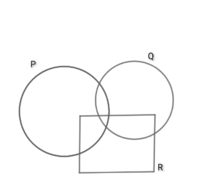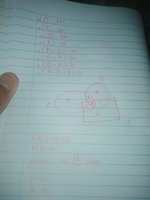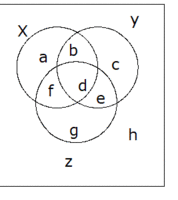@pka
pka taught this subject, and I hope he will give a more orderly explanation than I can, but I shall try to give a very common sense answer. I suggest, however, that you send a clear picture of the
entire problem. Right now, I am not sure we understand it correctly. It would also help if you tell us a little bit about your level of education so we can give an explanation suitable for you
Let's start by thinking about groups that have
NO MEMBERS in common, like the boys in a class and the girls in a class. How many are in the class? We simply add the number of boys in the class and the number of girls in the class. Easy. Any question?
OK. Here is a problem. In a class, 14 like chocolate ice cream best, 10 like vanilla ice cream best. But there are 31 students in the class. How is this possible? 14 + 10 = 24 < 31. There must be 7 students who like best something other than either chocolate or vanilla. If the sum of those in the groups we counted add up to
LESS THAN the total, there must be groups we failed to count. Make sense?
All right. Now let's think about a slightly more complex problem. In a room, we have 26 diplomats. 13 diplomats served in Tokyo; 9 served in Brussels, and 6 served in neither city. 13 + 9 + 6 = 28 > 26. How is this possible? We must have overcounted somewhere. Well, we did. 2 diplomats must have served in both Tokyo and Brussels. We really must have
11 served only in Tokyo
7 served only in Brussels
2 served in both
6 served in neither
11 + 7 + 2 + 6 = 26.
We now see the importance of ensuring that two or more groups do not contain common members or else that an adjustment is made to account for common members.
We can get the correct answer in either one of two ways
13 + 9 + 6 - 2 = 26 = 11 + 7 + 2 + 6.
You with me?
Now I like to break things down into groups without common members ("disjoint sets").
Now, in your problem, how many prefer all three brands?
How many prefer P and Q?
Does that include those who like all three brands?
How many prefer just P and Q but not R?
How many prefer just P and R but not Q?
How many prefer just Q and R but not P?



